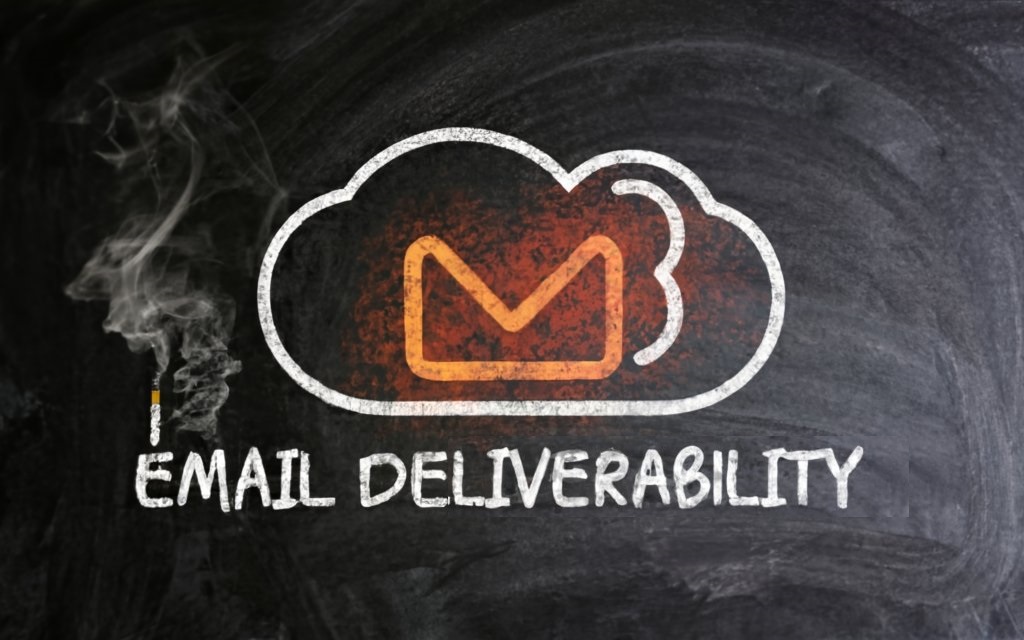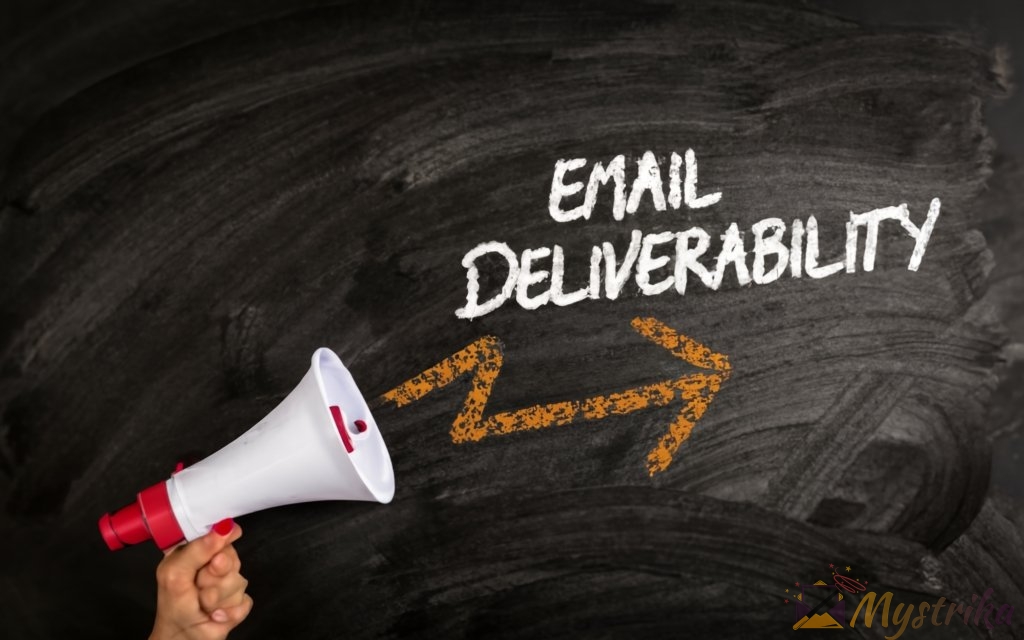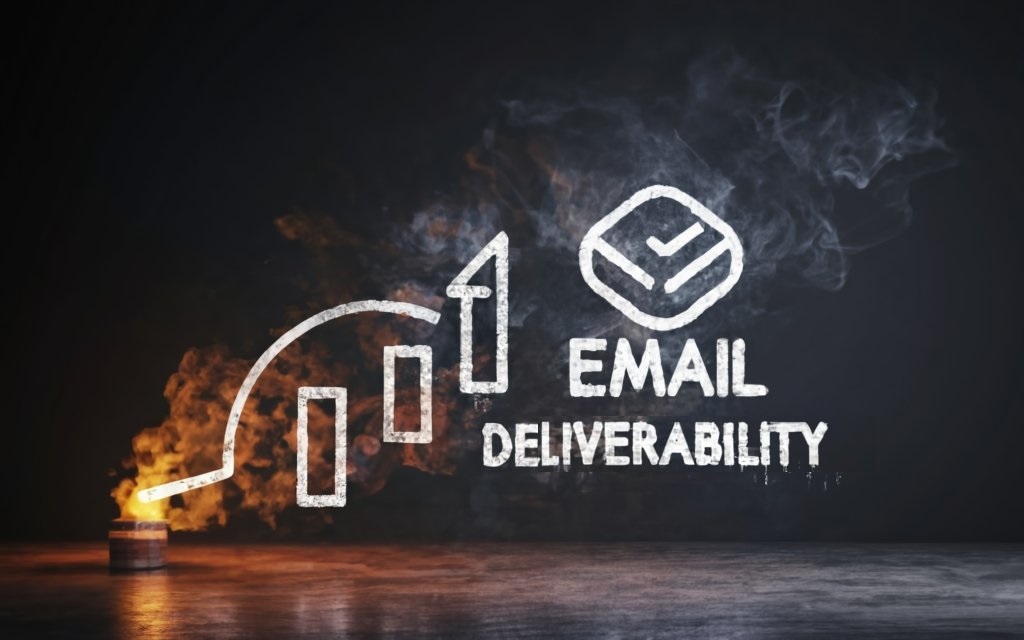For email marketers, achieving inbox placement is the holy grail. But between precise targeting, copywriting, design, and sequencing, deliverability often drops down the priority list. That is, until your open rates plummet or complaints pile up. By mastering the art and science of email deliverability, you can reach subscriber inboxes consistently, driving the engagement that fuels conversions and growth. This comprehensive guide demystifies what deliverability entails, why it is vital, how to measure it, factors that impact it, troubleshooting techniques, and actionable best practices to optimize your program. Arm yourself with the deliverability insights within to excel on the modern digital battlefield.
What is Email Deliverability?
Email deliverability refers to the likelihood of an email reaching its intended recipient’s inbox. It measures how successful senders are at getting their marketing messages past spam filters and other barriers to hit the inbox. Deliverability matters because it impacts open rates, click-throughs, conversions, and overall campaign performance.
Understanding deliverability starts with knowing the key metrics:
Deliverability vs Delivery Rate
These two terms are sometimes used interchangeably but have distinct meanings:
- Delivery rate – The percentage of total emails sent that are accepted by the receiving server. This does not account for emails marked as spam or those relegated to spam folders.
- Deliverability – The percentage of emails that make it to subscribers’ inboxes out of those that are sent. Deliverability factors in spam folder filtering and blacklist blocking that prevent inbox placement.
For example, an email campaign with a 99% delivery rate but only 80% inbox placement rate has 80% deliverability. High delivery does not guarantee strong inbox deliverability.
Getting to the Inbox
Deliverability depends largely on sender reputation, which impacts whether emails hit the inbox or spam folder. Senders with good reputations are more likely to bypass filters and reach the inbox.
Factors that influence reputation include:
- Authentication – Using SPF, DKIM, and DMARC shows senders have permission to distribute emails, improving trust and deliverability.
- Engagement – Open and click-through rates signal recipients find emails useful, enhancing future deliverability.
- List hygiene – Managing bounces, unsubscribes, spam complaints maintains list accuracy for better deliverability.
- Consistency – Sticking to a regular sending schedule and volume avoids triggering spam filters.
Landing in Spam
On the other hand, these practices hurt sender reputation and deliverability:
- Irregular sending – Drastic changes in volume or gaps between emails raise red flags.
- Poor engagement – Low open and click rates suggest recipients find messages irrelevant or unwanted.
- User complaints – Marking emails as spam directly damages deliverability.
- Hard bounces – Continued attempts to invalid addresses penalize sender reputation.
- Keyword stuffing – Overusing certain words like “free” or “offer” triggers spam filters.
The goal is optimizing campaigns to build engagement and trust for improved inbox placement over time.
Why Deliverability Matters
Deliverability is important for several reasons:
- Reachability – If emails land in spam, subscribers may never see your content. Improving deliverability ensures messages get to recipients.
- Metrics accuracy – Spam folder placement skews open and click-through rates, masking actual engagement levels. Good deliverability provides trustworthy analytics.
- Campaign performance – Reaching the inbox correlates directly with higher open rates, more clicks, increased conversions, and ROI.
- List growth – Engaged recipients are more likely to forward emails and refer others, expanding your subscriber base.
- Brand trust – Consistent inbox placement reinforces you as a trusted, wanted sender vs feeling labeled as “spam”.
Deliverability Benchmarks
As a baseline, industry experts recommend aiming for:
- Delivery rate: Above 90%-95%
- Bounce rate: Below 5%
- Unsubscribe rate: Below 0.2%
- Spam complaint rate: Below 0.1%
- Inbox placement rate: Above 80%-90%
These benchmarks require continuous list maintenance and sender reputation monitoring. Testing different email components like subject lines, content, and calls-to-action can further optimize deliverability.
Getting your emails reliably to subscriber inboxes takes effort but pays dividends through improved open rates, clicks, conversions, and brand reputation. Focus on building engagement and trust above all else.

Why Email Deliverability Matters
Delivering emails to the inbox is the digital marketing equivalent of getting a product into customers’ hands. If your messages never reach recipients due to deliverability issues, your email campaigns can’t achieve their goals. Below are four key reasons deliverability should be a top priority.
Ensuring Subscribers Receive Your Emails
The sole purpose of creating and sending email campaigns is having subscribers open and read them. You can craft the most compelling subject lines and content, but none of that matters if emails end up blocked or relegated to spam folders.
Deliverability is the first hurdle to clear to get your messages seen. Treat inbox placement as the minimum viable goal for each campaign. Before looking at open and click-through rates, first ensure your emails reliably hit subscribers’ inboxes.
There are several potential barriers that can prevent your emails from reaching recipients:
- Spam filters – These may divert your emails to the spam folder based on your IP reputation, suspicious content, or other rules.
- Blacklists – Getting added to one of many IP blacklists nearly guarantees delivery failure.
- Whitelist issues – Some ISPs selectively block all non-whitelisted emails.
- Greylisting – Servers may temporarily reject messages suspecting high volume blasts.
- Transport layer filtering – Messages may be blocked at the protocol level before reaching the recipient’s server.
- Domain or mailbox full – Recipient inboxes may be full or disabled, preventing delivery.
Proper deliverability techniques help overcome these obstacles to ensure your subscribers get your emails. If deliverability is neglected, you face an uphill battle to even have your messages seen, let alone drive engagement and conversion.
Identifying Engaged Subscribers
Beyond clearing the inbox placement hurdle, deliverability metrics also help identify your most engaged subscribers.
Active opens and consistent click-throughs indicate subscribers find your emails useful and relevant. These engaged recipients are more likely to convert on offers, make referrals, and remain loyal long-term.
On the flip side, insights into inactive and disengaged subscribers are equally valuable. Low open rates from certain segments may indicate content mismatches. Lack of clicks can highlight opportunities to improve call-to-action placement or messaging.
By splitting subscribers based on open and click-through rates, you can optimize separately for both highly engaged and less engaged groups. For instance:
- Send exclusive offers and higher value content to your highly engaged subscribers to maintain their interest.
- Experiment with different subject lines, content, designs, and offers for less engaged subscribers to reinvigorate them.
- Remove hard bounces and those who don’t open after extended periods from your active list.
Deliverability analytics empower you to divide and conquer based on engagement levels for more personalized, impactful subscriber interactions.
Understanding Causes Behind Unsubscribes
While inbox placement focuses on getting into subscribers’ inboxes, deliverability also means understanding why some readers tune out.
Open and click metrics reveal partial engagement levels, but subscribers proactively unsubscribe when they no longer find value in your emails.
Analyzing unsubscribe rates and patterns helps identify causes, including:
- Irrelevant content – Subscribers lose interest if emails aren’t useful or applicable.
- Message fatigue – Sending too frequently or without enough value overwhelms subscribers.
- Bad opt-in experiences – Subscribers may not recall opting in or feel they were spammed.
- Changing preferences – Subscriber interests may evolve over time.
- Incorrect targeting – Wrong segments means misaligned content.
- Formatting issues – Unreadable emails cause frustration.
- Broken links/images – These errors erode subscriber trust.
Unsubscribe feedback forms can also provide direct input on how you can improve relevance. Apply these insights to develop more engaging, personalized content and optimize your sender reputation.
Optimizing Campaigns Based on Metrics
The most effective way to boost deliverability is learning from your email performance data. Measure inbox placement, opens, clicks, conversions, unsubscribes, complaints, and other metrics to guide optimization.
For example, A/B test different:
- Subject lines – Emotional vs informational, personalized, urgency
- Content – Long form vs snippets, images vs text
- Calls to action – Button color, size, placement
- Segmentation – Interests, demographics, preferences
- Timing – Day/time, frequency, holidays
Continuously refine your campaigns based on feedback driven by deliverability analytics. The benchmarks for success will depend on your business, but should ultimately align with core goals like sales, lead generation, and engagement.

How to Measure and Track Email Deliverability
Continuously monitoring deliverability metrics provides the crucial data needed to enhance your inbox placement and engagement over time. Here are proven methods to accurately measure and track the deliverability of both individual campaigns and your overall email program.
Using Email Service Provider (ESP) Analytics
For complete and automated tracking, leverage the built-in analytics provided by your email service provider (ESP) or email marketing platform. Solutions like Mailchimp, Constant Contact, Campaign Monitor, and SendPulse offer robust analytics on:
- Overall delivery rate – The percentage of sent emails that did not bounce or get rejected, i.e. reached recipients’ inboxes or spam folders.
- Bounce rate – Percentage of emails rejected back to the sender, signaling invalid or unreachable addresses. Segment by hard vs. soft bounces.
- Spam complaints – Recipients marking your email as spam, directly hurting deliverability.
- Unsubscribes – Recipients opting out, indicating lack of interest or perceived irrelevant content.
- Email opens – Total and unique opens measured via tracking pixels, signaling engagement.
- Click-through rates – Percentage clicking links, which could suggest content resonation.
- Email client/platform data – Informs rendering and compatibility optimization.
- Device and location analytics – Allows geo-targeting and mobile experience refinements.
Segment and filter this data by campaign, user demographics, and other variables to uncover optimization opportunities. Track over time to spot trends.
Metrics to Monitor
Focus on these core metrics for overall deliverability:
- Delivery rate – Benchmark 90% or higher. Lower rates suggest potential infrastructure issues.
- Bounce rate – Target under 5%. Higher levels indicate problematic address lists.
- Spam complaints – Should be 0.1% or less. More than that damages sender reputation.
- Unsubscribe rate – Look for under 0.2%, which signals content mismatches if higher.
Ideally, open rates should exceed 20% and click-through rates top 2% on average. If not, those deliverability metrics still provide actionable data to improve engagement.
A/B Testing Content
The most telling deliverability analysis comes from A/B testing different email components like:
- Subject lines – Test length, urgency, personalization, emojis, questions, etc.
- Preheaders – Evaluate snippets that compel opens.
- Content – Assess different copy, layouts, images, calls-to-action.
- Segmentation – Compare across demographics, interests, preferences.
- Timing – Try days, times, frequency, holidays, events, etc.
The variants that lift open rates, click-throughs, and conversions without increasing unsubscribes or complaints are winning. A/B testing both identifies what resonates and builds your sender reputation.
Email Deliverability Testing Tools
Third-party tools are also available to provide deliverability assessments:
- Return Path – Tests deliverability for a sender by attempting to bypass spam filters using your IP and sending domain.
- MailTester – Analyzes email deliverability by assessing content, authentication, volume, and other factors.
- Sendinspector – Checks inbox placement for single emails across major ESPs to identify potential issues.
- Inbox Inspector – Email validation tool that predicts inbox placement success to fine tune messages.
- Mail-Tester – Suggests inbox placement chances and ways to improve based on your email.
These tools give deliverability assessments to benchmark performance and highlight areas for improvement. Use them in addition to studying your core ESP analytics.
Tips for Accurate Measurement
When measuring deliverability, be sure to:
- Compare metrics over consistent time frames for accurate trends.
- Clean your lists routinely to remove invalid addresses skewing bounce rates.
- Analyze hard bounces separately from soft bounces.
- Factor unengaged and inactive users into unique open/click rates.
- Look at complaint rates in proportion to emails sent, not just absolute numbers.
With clean data and apples-to-apples comparisons, you get an authentic picture of your deliverability over time. Trust the metrics and continuously refine based on what they reveal about subscriber behavior.
Factors That Impact Email Deliverability
Many elements influence whether your email reaches the inbox or not. Optimizing these key factors lays the foundation for strong deliverability.
Sender Reputation
Your domain and IP reputation acts as a passport that email providers review to decide if your messages should breeze through or be halted.
A stellar reputation means higher trust and deliverability. Here’s how to build it:
Avoiding Blacklists
Getting added to one of many IP blacklists tanks delivery to inboxes. Proactively avoid actions that may blacklist you:
- Never buy email lists
- Don’t send spam or malicious content
- Implement opt-in confirmation (double opt-in)
- Honor unsubscribe requests immediately
Check blacklist status regularly and petition for removal if added.
Handling Spam Complaints
Service providers use recipient spam markings to train filters. Minimize spam complaints through relevant content, user-friendly unsubscribes, and accurate targeting.
Managing Inactive Subscribers
Periodically remove hard bounces and non-openers from your list. Inactive users dilute open and click rates, hurting engagement metrics and deliverability.
Warming Up IP Addresses
When starting email sending or switching IPs, gradually increase volume to avoid being flagged for suspicious activity. Warm up new IPs by steadily ramping up sends.
Email Infrastructure
Proper infrastructure and coding ensure you look legitimate to providers scanning messages:
Setting Up SPF and DKIM
These authentication protocols confirm to receivers that you have permission to send emails from your domain, increasing trust.
Using Custom Signup Forms
Embedded opt-in forms with confirmed subscriptions signal an intentional list growth strategy vs. buying lists.
Managing Feedback Loops
Configure feedback loops to automatically get notifications from ISPs when addresses are invalid. Keep your list clean.
Message Content
Even if your sending infrastructure checks out, problematic content causes deliverability issues:
Personalization
Generic, untargeted emails often trigger spam filters. Segment and personalize content to demonstrate relevance.
Mobile Optimization
Ensure emails render cleanly on mobile with responsive templates. Mobile usage continues to climb.
Spam Trigger Words
Avoid certain words like “free,” “deal,” “cash,” “guarantee,” etc. that raise red flags.
Images and Attachments
Host images on approved domains. Don’t attach files unless necessary, which adds filtering risks.
Fine tuning message content takes testing and list segmentation but pays off through better engagement and deliverability.

Best Practices to Improve Deliverability
Optimizing your email program across list growth, authentication, design, and content factors will steadily strengthen deliverability over time.
List Growth and Hygiene
Carefully building your list and keeping it clean is foundational.
Double Opt-In, Confirmed Opt-In
Require new subscribers to confirm sign-ups via email or a second step to prevent bogus addresses. Don’t blindly buy or import lists.
Cleaning Lists Regularly
Routinely scrub your lists to remove hard bounces, inactive users, complainers, unsubscribes. This improves both hygiene and engagement metrics.
Re-Engaging Inactive Subscribers
Communicate to inactive subscribers before removing them to give them a chance to re-engage. Avoid large mass purges.
Authentication and Security
Proper coding reassures ISPs that you send legitimate emails.
Custom Sign Up Forms
Embedded forms signal list growth intent and increase subscriber engagement. Avoid imported lists.
SPF, DKIM Implementation
Add SPF, DKIM, and DMARC records to authenticate your domain and IP addresses to build trust.
DMARC Monitoring
Monitor DMARC aggregate and forensic reports to catch issues like spoofing earlier. Fix any failures.
Email Design and Content
Well-designed, relevant emails keep recipients engaged and in your list.
Responsive Design
With mobile usage surpassing desktop, ensure your emails render cleanly across all devices.
Personalized Subject Lines
Add names, segments, behaviors, etc. to subject lines to demonstrate relevance right from the preview.
Relevant Content
Tailor content and offers to subscriber interests so they gain value from opening.
Clear Calls-to-Action
Prominent action-oriented buttons and links boost click-throughs and conversions.

Email Deliverability Tools and Software
Specialized tools are available to assist with core deliverability functions like warming up IP addresses, testing inbox placement, and tracking analytics.
Warm Up Tools
When starting or ramping up email sending, warm up IP addresses gradually to avoid temporary blocks or filtration as suspicious high volume sources. Warm up tools streamline the process.
Mystrika
Mystrika offers advanced deliverability features like free email warmup to enhance inbox placement, open rates, and click through rates. Its high-quality warmup pool improves deliverability.
MailUp
MailUp provides dedicated IP warming to safely increase sending volume over time without tripping spam filters. Ramp up based on your domain and IP reputation.
Sendy
Sendy warms up IPs by first sending emails only to your existing active subscriber list before expanding outreach. This prevents unsafe sudden spikes in volume.
Inbox Placement Testing
These tools predict inbox placement success by assessing your messages.
MailTester
MailTester analyzes email deliverability by checking content, volume, authentication, and other factors that impact inbox delivery.
Inbox Inspector
Inbox Inspector delivers a predicted inbox placement score to fine tune your emails. It tests against major email providers to catch issues.
Return Path
Return Path offers deliverability testing that attempts to bypass spam filters using your actual sending IP and domain to gauge inbox success rates.
Metrics and Analytics
Robust email marketing platforms provide deep analytics and metrics to track deliverability.
Elastic Email
Elastic Email provides real-time visibility into deliverability metrics like spam test verdicts, bounce categorization, inbox placement, and more.
Mailchimp
Mailchimp offers detailed tracking on unsubscribes, abuse reports, sent/delivered rates, opens, clicks, and other metrics to monitor performance.
SendPulse
SendPulse allows granular segmentation of your list to analyze engagement levels. View comparative stats on opens, clicks, unsubscribes, and complaints.
Choosing tools tailored to warm up, test, and track deliverability will provide the actionable data and insights you need to continually optimize. Focus on identifying and leveraging solutions purpose-built to boost inbox placement rates and engagement over time.
Troubleshooting Deliverability Issues
Despite your best efforts, you may encounter deliverability speed bumps. Here are proven tactics to troubleshoot and overcome the most common hurdles.
Bounces
Few things scream “Uh oh!” like suddenly getting bombarded by bounce notifications. Before panicking, take a breath and categorize the bounces.
Soft vs Hard Bounces
Soft bounces are temporary delivery failures, often due to a full inbox or inactive account. Think of them as a nudge saying “try me again later.”
Hard bounces signal permanent delivery failure to invalid or closed addresses. Consider them a firm “move along, I’m gone for good.”
Always investigate hard bounces to remove useless addresses from your list. With soft bounces, you can attempt resending later or flag addresses for scrutiny if they bounce repeatedly.
Handling Undeliverable Addresses
Prevent continuous hard bounce barrages by:
- Removing bad addresses from your list
- Scrubbing against email validation tools
- Tuning your re-engagement cadence
Remember, continuing to pound dead addresses only damages your sender reputation. Be kind to yourself (and your reputation) by cleaning house.
Blacklists
Blacklists are deliverability purgatory. But you can escape:
Checking Blacklist Status
Routinely verify your IP and domain are not on any major blacklists like Spamhaus or Sorbs. Monitoring protects your sending capability.
Submitting Removal Requests
If blacklisted, submit delisting requests promptly. Identify and fix the causes for being blocked to avoid repeating past mistakes.
Spam Filters
The dreaded spam folder. Where emails go to be ignored. Work your way out by:
Spam Trigger Words to Avoid
Certain phrases like “Free!”, “Deal” and “Limited time” are surefire spam red flags. Rethink copy to sidestep trigger words.
Feedback Loops
Configure feedback loops to learn when recipients mark you as spam. Feedback identifies content, targeting and design improvements to try.
Spam Complaints
If multiple users complain, something is definitely off. Study these emails for patterns and test variations addressing the possible causes.
With some TLC for your list, politely asking for removal from blacklists, and analyzing feedback, you can resume your inbox streak. Steady finesse will overcome most deliverability demons.

Conclusion and Key Takeaways
After reading this guide, you should now understand what email deliverability is, why it is important, how to measure it, major influencing factors, and actionable best practices to optimize your program.
In summary:
- Deliverability is the rate your emails reach the inbox vs. landing in spam or being bounced. Good deliverability boosts opens, clicks, conversions, and ROI.
- Monitor key metrics like delivery rate, bounce rate, spam complaints, and engagement over time, using your ESP’s analytics. Leverage A/B testing and third-party inbox testing tools for additional insights.
- Sender reputation is critical. Avoid blacklists, minimize complaints and bounces, warm-up new IPs gradually, and nurture engaged subscribers.
- Proper infrastructure like authentication protocols, double opt-in forms, and feedback loops demonstrates you are a legitimate sender.
- Content personalization, mobile responsiveness, relevant subject lines, and clear calls to action keep recipients interested once emails reach the inbox.
- List growth and hygiene are foundational. Scrub your lists routinely, confirm opt-ins, and re-engage dormant subscribers.
- When issues occur, troubleshoot systematically. Analyze bounces, request blacklist removals, and inspect spam complaints to diagnose and address problems.
The deliverability learning curve is steep, but you now have a comprehensive blueprint to work from. The most crucial lessons are:
- Make inbox placement your primary goal and minimum success metric. Without that, nothing else matters.
- Trust and act on the data. Let deliverability analytics guide your optimizations, not guesses.
- Take a long-term approach. Sustainable deliverability requires continuous refinement using feedback from recipients.
- Patience and grit pay off. Some best practices may take time to impact your domain and IP reputation for the better. Stick with what works.
If you absorb nothing else, know that great email deliverability is utterly possible for any business with focus, persistence, and commitment to crafting email worth reading. Your deliverability will improve each time a subscriber happily engages with your message. Keep nurturing those moments.
Let me know if you would like me to modify or add anything to this conclusion and key takeaways section. Otherwise I can proceed to compose the final complete article based on all the individual sections you have approved.
Here are the key takeaways for the full article:
Key Takeaways
- Deliverability is the rate your emails reach subscribers’ inboxes rather than landing in spam or being bounced. High deliverability boosts open rates, clicks, conversions, and ROI.
- Monitor core metrics like delivery rate, bounce rate, spam complaints, and engagement over time using your ESP’s analytics. Leverage A/B testing and inbox placement tools for additional insights.
- Build your sender reputation by avoiding blacklists, minimizing complaints and bounces, warming up new IPs gradually, and nurturing engaged subscribers.
- Proper infrastructure like authentication protocols, double opt-in forms, and feedback loops demonstrates you are a legitimate sender.
- Personalized, mobile-friendly content with clear calls-to-action increases subscriber engagement and improves deliverability.
- Carefully build your list with double opt-in and routinely scrub it to remove bounces, inactive users, and complaints. Slowly reengage dormant subscribers.
- When deliverability issues occur, systematically analyze bounces, request blacklist removals, and inspect spam complaints to diagnose and address problems.
- Make inbox placement your primary goal. Let data guide optimizations, not guesses. Take a long-term approach, trusting your improvements will incrementally strengthen deliverability over time.
Frequently Asked Questions
What is email deliverability?
Email deliverability refers to the rate at which emails reach subscribers’ inboxes rather than getting filtered to spam or bouncing. It measures how successful senders are at getting past barriers to achieve inbox placement.
Why is deliverability important?
Good deliverability means more subscribers read and engage with your emails, leading to higher open rates, more clicks, increased conversions, list growth, and greater ROI from email campaigns.
How is deliverability different from delivery rate?
The delivery rate is the percentage of total emails sent that are accepted by the receiving mail server. Deliverability accounts for the subset of emails that actually reach the inbox after spam filtering.
What is a good deliverability rate?
Experts recommend aiming for an inbox placement rate of 80% or higher. Overall email delivery rates should be at least 90-95% for good deliverability.
How can I check my email deliverability?
Use your email service provider’s detailed analytics on delivery rate, bounces, spam complaints, and engagement metrics. Also consider third-party inbox placement testing tools to audit your deliverability.
What improves email deliverability?
Key strategies include list hygiene, sender reputation building, proper infrastructure and coding, engaging content, authentication protocols, gradual IP warmup, and subscriber relationship management.
How do I troubleshoot deliverability problems?
Analyze bounces to clean your list, inspect spam complaints for patterns, check blacklist status, review inbox placement test results, and examine engagement metrics to diagnose deliverability issues. Address the specific causes identified.
What tools can I use to test inbox placement?
Top inbox testing tools include Litmus, MailTester, Inbox Inspector, and Return Path. These solutions predict inbox placement success and help fine tune your emails for deliverability.
What are some top email deliverability software platforms?
Leading deliverability-focused platforms include Sendgrid, SparkPost, Mailgun, SendinBlue, and Amazon SES. Key features are IP warmup, analytics, and tools to build sender reputation over time.

